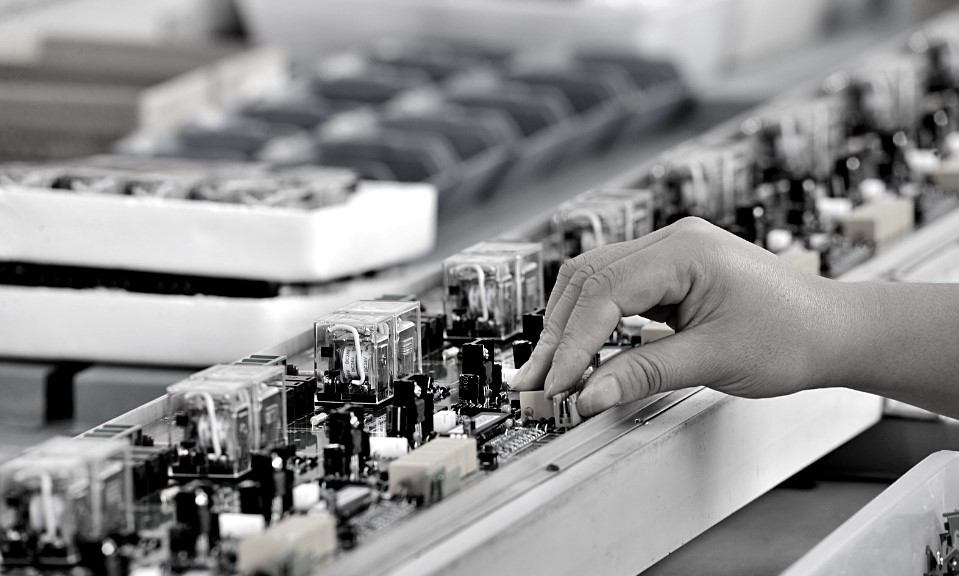The VLSI (Very Large Scale Integration) industry has seen vibrant growth in recent years, as advances in technology have led to an increased demand for more complex and sophisticated integrated circuits.
This growth has created a wealth of opportunities for start-ups in the VLSI space, as well as a plethora of career openings for those with the right skills and expertise, including new window of opportunity for startups. As the industry continues to expand and evolve, it is an exciting time to be a part of the VLSI ecosystem
The VLSID industry is experiencing unprecedented growth as governments around the world increase their investments in the sector. In India, the Ministry of Electronics and IT announced a $10 billion investment to support and boost the semiconductor industry, along with capital incentives and the DLI scheme for fabless startups.
During an interview with thenewsfacts, Mr. Venkata Simhadri, the General Chair of the VLSID Conference 2023 and CEO and Managing Director of MosChip, spoke about the evolution and future of the VLSI industry. He also shared his thoughts on the current state and growth of the VLSI industry in India, as well as the position of the industry in the country, including opportunities for skilled professionals.
The VLSI industry in India is thriving, with an estimated 120,000 chip design engineers comprising 20% of the world’s chip design workforce. Every major semiconductor company in the world has a design center in the country. However, India has little presence in the manufacturing ecosystem and has the potential to expand with the support of the current semiconductor policy.
Latest Developments in the VLSI and Embedded Systems Industry
The chip industry is constantly advancing and evolving, with new developments constantly emerging. Some of the latest innovations in the VLSI and embedded systems industry include the open-source CPU architecture RISC-V, chiplets, and embedded AI.
RISC-V: The RISC-V architecture is an open-source CPU architecture that has the potential to disrupt the industry. India is heavily investing in this technology, with the government declaring RISC-V as the national processor and funding its development at C-DAC and IIT-Madras.
Chiplets: A chiplet is a tiny integrated circuit that contains a well-defined subset of functionality. It is designed to be combined with other chiplets on an interposer in a single package. Major vendors are already producing computer processors that combine a select number of chiplets, rather than going down the traditional route of monolithic semiconductor manufacturing.
Embedded AI: The VLSI and embedded systems industry is quickly approaching the future of applied fields of data science and AI. Embedded AI technology is being integrated into various applications, including autonomous vehicles, drones, and the Internet of Things (IoT).
As the chip industry continues to advance and grow, the potential for disruptive innovation in the global digitization market will only increase. The International VLSI Design & Embedded Systems conference – VLSID 2023, on 10th to 12th January in Hyderabad – will highlight the important role that semiconductor industries play in various sectors including enterprise, consumer, industrial, and defense electronics. This will be the first physical VLSI conference post the covid pandemic.
Career opportunities abound in the rapidly-growing VLSI industry

There are a variety of openings available in the VLSI industry for engineers with the appropriate skills and experience. Some common roles in the industry include:
Chip design engineer: These engineers are responsible for designing and developing semiconductor chips. They use computer-aided design (CAD) software to create detailed schematics and layouts of the chip’s components and circuits.
Verification engineer: These engineers are responsible for testing and verifying the functionality of chip designs. They use simulation tools to ensure that the chips meet all specified requirements and perform as expected.
Physical design engineer: These engineers are responsible for converting chip designs into physical layouts that can be used to manufacture the chips. They use CAD tools to place and route the components and circuits on the chip’s layout.
Test engineer: These engineers are responsible for developing and executing tests to ensure that the chips are functioning correctly and meeting all specified requirements. They use specialized equipment to test the chips at various stages of development and production.
Engineers can build their careers in the VLSI industry by gaining the necessary education and experience in areas such as computer science, electrical engineering, and computer engineering. It is also beneficial for engineers to stay up-to-date on the latest technologies and trends in the industry through professional development courses and networking opportunities.
VLSI industry offers numerous opportunities for start-ups to develop and thrive
There are many opportunities for start-ups in the Very Large Scale Integration) industry.
Some potential areas for start-ups to explore include:
- Developing new and innovative designs and technologies.
- Providing design services to other companies.
- Manufacturing devices or components.
- Providing testing and quality assurance services.
- Developing software and tools for the design process.
- Providing consulting services to companies looking to enter the VLSI industry.
The demand for more complex and sophisticated integrated circuits is driving the growth of the VLSI industry, creating opportunities for innovative start-ups to enter the market and capture a share of the market. Those who are able to identify and address the needs of this growing industry stand to benefit greatly.
The VLSID 2023 is bringing the brightest minds in the startup industry and offering them opportunities to meet potential investors and pitch for investor participation in their startup growth story.
The US Congress also recently passed the CHIPS Act, which provides $52 billion in investments to strengthen domestic semiconductor manufacturing and research. The EU Chips Act also provides billions in financial support for advanced chip production and semiconductor research in the EU.
Meanwhile, the Indian government has approved the Semicon India programme, investing INR 76,000 crore in the development of the country’s semiconductor and display manufacturing ecosystem. The programme aims to provide financial support to companies investing in semiconductors, display manufacturing, and design, with the goal of strengthening India’s presence in the global electronics value chain.






